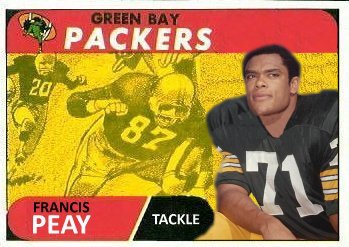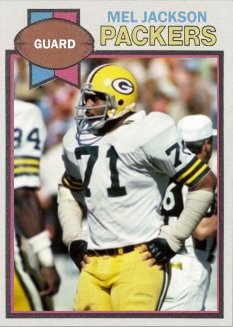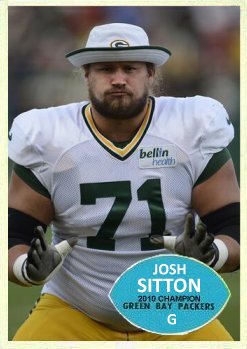Gene Ronzani played and coached under one legend in Chicago, George Halas, and replaced another, Curly Lambeau, in Green Bay. Born on March 28, 1909 in the town of Iron Mountain in Michigan’s Upper Peninsula, Ronzani went to college in Wisconsin at Marquette where he was the first athlete to win nine letters from 1930-1932. Ronzani played basketball and track, but starred on the gridiron as an All-American back. Halas signed Gene for the Bears in 1933 and he was a steady performer for Chicago over the next six years. In 1939, he retired from playing to become head coach of the Newark Bears, Chicago’s farm team. From 1939-1941, he led Newark to a 14-13-2 record. Newark shut down for the War, and Gene was recalled to Chicago as a player in 1944 and 1945. After the War, the Bears reconstituted their farm team in Akron in 1946, again with Ronzani in charge. Akron finished the year 8-3, and Gene moved back to Chicago as an assistant coach for the next three years.
When the Packers ousted Lambeau in 1950, they turned to their chief rival, the Bears for his replacement. Ronzani was a highly respected assistant in the league, and he hired a coaching staff of all former Bears. His biggest legacy in Green Bay, though, was the hiring of Chicago native Jack Vainisi as talent scout. Vainisi’s drafts ultimately would provide Vince Lombardi with a nearly ready made championship team when he was named head coach at the end of the decade. Ronzani was not so fortunate.
The Packers were a very weak team in 1950, and Gene’s efforts to rebuild the talent base were only partially successful. When he was fired with two games to play in 1953, he told the Chicago Tribune, “If I was the cause of our failure, they now can prove it. I’m glad to be out of it.” He added, “All one has to do is compare us man for man with other teams to discover it is not a great club. Maybe next year or the year after, with a few additions, it will be.” Being more specific, he noted, “We have no powerful fullback, no real break away runners in the backfield and lack experience in some spots. Also the Packers are not a big team. It is, however, a much better team than the one I took over in 1950.”
Hall of Fame halfback Tony Canadeo told Richard Whittingham for What a Game They Played, “Ronzani knew a helluva lot about football. He was trying desperately to rebuild the football team and that was a pretty tough job.” He tried to be innovative by installing a precursor to the Shotgun offense for running quarterback Tobin Rote. The Packers ran the ball just 47.8% of the time under Ronzani, 11% below the league average at the time. The team was outscored 29.3 points per game to 20.9 and went just 14-31-1 for Gene.
Ronzani also brought the first black players to Green Bay, with end Bob Mann being the very first in 1950, and changed the team colors from blue and gold to green and gold, a change that remains in place to this day. The team’s poor record in conjunction with coaching turnover and some player dissension led to his firing after a dismal Thanksgiving loss to Detroit in 1953 that involved a second half collapse. Gene spent 1954 as the Steelers’ backfield coach and then got out of coaching. Iron Mountain had a Gene Ronzani Day in 1969 to celebrate their favorite son; he died six years later.
(Adapted from NFL Head Coaches.)




Custom cards are colorized.



























































